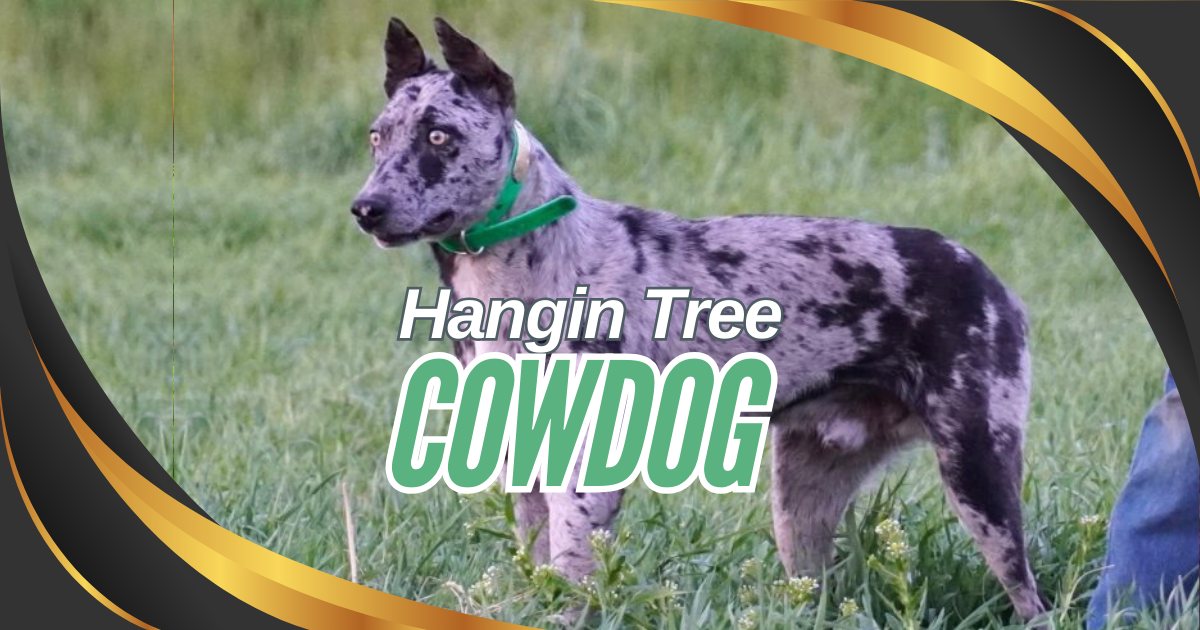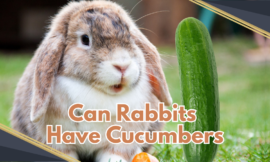The hanging tree cowdog is not your average canine companion. This hardworking and intelligent breed was specially developed for herding livestock, and it excels in both skill and stamina. If you’re interested in working dogs, you’ll be fascinated by these 5 surprising facts about the hanging tree cowdog.
- The Breed Was Developed by Cattle Ranchers
The hanging tree cowdog originated from a combination of working breeds specifically to meet the needs of cattle ranchers in the United States. - It’s a Crossbreed of Four Working Dogs
This breed is a result of crossing four specific breeds: Border Collie, Kelpie, Catahoula Leopard Dog, and Australian Shepherd. - They Are Known for Their Incredible Herding Skills
Hanging tree cowdogs are bred for intelligence and agility, making them exceptional herders who can work long hours without tiring. - They Have a Natural Instinct to Control Livestock
Unlike many other breeds, these dogs don’t need extensive herding training. Their instincts are so strong that they naturally take to controlling cattle. - This Breed Is Relatively New
The hanging tree cowdog is a fairly new breed, developed over the last few decades, yet it has quickly become a favorite among ranchers and farmers due to its abilities.
What Is a Hanging Tree Cowdog? A Complete Overview of This Working Dog
The hanging tree cowdog is a highly specialized herding breed designed to handle tough working conditions. Developed by ranchers for herding cattle, the breed combines the best traits of the Border Collie, Australian Shepherd, Kelpie, and Catahoula Leopard Dog. These dogs are known for their stamina, intelligence, and loyalty, making them perfect companions for demanding jobs on farms and ranches.
This breed gets its name from the Hanging Tree Ranch in Texas, where the original breeding program began. It was created to meet the need for a high-energy, versatile dog that could efficiently herd livestock across large areas.
Training a Hanging Tree Cowdog: Tips for Success
Training a hanging tree cowdog can be both rewarding and challenging due to the breed’s intelligence and energy levels. Here are some tips to help you succeed in training this active dog:
- Start Early: Begin training your cowdog as a puppy to establish good habits from the start.
- Focus on Herding Commands: Use specific commands such as “go by,” “walk up,” or “come by” to hone their herding instincts.
- Socialization Is Key: Expose your dog to different people, animals, and environments to prevent aggression or fear.
- Use Positive Reinforcement: Hanging tree cowdogs respond well to treats and praise during training sessions.
- Provide Mental and Physical Stimulation: This breed requires both mental challenges and physical activity to stay happy and well-behaved.
With proper training and guidance, the hanging tree cowdog can excel not just in herding but also in obedience and agility.
Temperament and Characteristics: What Makes Hanging Tree Cowdogs Stand Out?
The hanging tree cowdog is a high-energy, loyal, and intelligent breed. They thrive when given a job to do and don’t do well in environments where they are left idle. Here are some key characteristics that make them stand out:
- Loyal and Protective: These dogs are extremely loyal to their owners and protective of livestock.
- High Energy: Hanging tree cowdogs need plenty of exercise and mental stimulation to stay healthy and happy.
- Independent Thinkers: They can make decisions on their own, which is essential when herding livestock.
- Strong Work Ethic: This breed is happiest when it has a task or responsibility, whether it’s herding or training.
Hanging Tree Cowdog vs Border Collie: Which Is Better for Your Needs?
Both hanging tree cowdogs and Border Collies are renowned for their herding abilities, but there are some differences between the two breeds. Here’s a quick comparison:
- Energy Levels: Both breeds are energetic, but hanging tree cowdogs are often better suited for rugged ranch work.
- Training: Border Collies require more structured training, while hanging tree cowdogs have a stronger natural instinct for herding.
- Temperament: Hanging tree cowdogs tend to be more independent, whereas Border Collies may bond more closely with their handlers.
Ultimately, the best choice depends on your specific needs. If you require a versatile ranch dog, the hanging tree cowdog might be the better option.
Best Jobs for Hanging Tree Cowdogs: A Breed Born to Work
This breed was developed with working purposes in mind. Here are some of the best jobs suited for hanging tree cowdogs:
- Herding Livestock: They excel in cattle herding, even in harsh conditions.
- Farm Assistance: These dogs can assist with various tasks around the farm, such as moving animals or guarding livestock.
- Search and Rescue: Their intelligence and stamina make them excellent candidates for search-and-rescue operations.
Are Hanging Tree Cowdogs Good Family Pets? What to Expect
While hanging tree cowdogs are bred for work, they can also make excellent family pets under the right conditions. However, they require active families who can meet their high energy needs. If left without mental or physical stimulation, they may become destructive or restless.
How to Care for a Hanging Tree Cowdog: Lifespan, Health, and Grooming Tips
Taking care of a hanging tree cowdog requires commitment, as they need regular exercise and grooming.
- Lifespan: These dogs typically live 12-15 years.
- Exercise Needs: Provide at least 1-2 hours of daily exercise to keep them healthy.
- Grooming: Brush their coat regularly to remove dirt and loose hair.
- Health Issues: Keep an eye out for hip dysplasia and eye problems, which are common in herding breeds.
Hanging Tree Cowdogs and Socialization: Why Early Exposure Matters
For hanging tree cowdogs, early socialization is essential. Given their strong herding instincts and natural drive to work, these dogs need exposure to different people, animals, and environments during their formative months. Proper socialization helps them develop into well-rounded dogs that can adapt to various situations, whether on the ranch or within a family setting.
How to Socialize a Hanging Tree Cowdog
- Introduce them to new animals: Take your cowdog to places where they can safely interact with other animals, such as dog parks or pet-friendly farms.
- Expose them to different environments: Whether it’s a busy urban setting or a quiet countryside, exposing your dog to various surroundings will prevent fear-based behaviors.
- Enroll in puppy classes: Puppy training classes are a great way to introduce your dog to obedience and social skills while meeting other dogs.
Early socialization helps hanging tree cowdogs manage their high energy and ensures they grow up to be confident, well-behaved companions. Without proper socialization, they may become overly protective, aggressive, or fearful in unfamiliar situations.
Feeding and Nutrition Guidelines for Hanging Tree Cowdogs
Providing the right nutrition is crucial for a high-energy working breed like the hanging tree cowdog. A well-balanced diet will support their muscle development, energy levels, and overall health. Here are some feeding tips to keep your dog in peak condition:
What to Feed a Hanging Tree Cowdog
- High-Protein Dog Food: Choose dog food that contains at least 25-30% protein to meet their energy demands, especially if they are actively herding.
- Healthy Fats: Fats are essential for maintaining their energy levels throughout the day. Look for ingredients like fish oil or chicken fat.
- Carbohydrates for Stamina: Include healthy carbs such as brown rice or sweet potatoes to sustain energy during long working hours.
How Often Should You Feed a Hanging Tree Cowdog?
Most adult hanging tree cowdogs do well with two meals per day, while puppies may require three to four smaller meals to support their rapid growth. Always ensure they have access to clean water, especially after exercise.
Proper nutrition plays a key role in preventing health issues and ensuring your cowdog stays strong and active throughout its life.
For more exciting blogs, visit our homepage Magzineco.
Conclusion
The hanging tree cowdog is an exceptional breed, perfectly suited for people who need a reliable and hardworking dog. Whether you’re looking for a herding dog, farm assistant, or an active companion, this breed won’t disappoint. With the right training, care, and environment, these dogs thrive and become invaluable assets on any ranch or farm.
Frequently Asked Questions (FAQs)
- What breeds make up the hanging tree cowdog?
The breed is a mix of Border Collie, Kelpie, Catahoula Leopard Dog, and Australian Shepherd. - Are hanging tree cowdogs good with children?
Yes, but they require supervision and may try to herd young children. - How much exercise do hanging tree cowdogs need?
They need at least 1-2 hours of exercise daily. - Can hanging tree cowdogs live in apartments?
No, they are best suited for homes with large yards or farms. - Do hanging tree cowdogs bark a lot?
They are known to bark when they sense danger or while herding livestock. - How much does a hanging tree cowdog cost?
The price for a hanging tree cowdog puppy typically ranges between $500 to $1,500, depending on the breeder, pedigree, and location. - Do hanging tree cowdogs shed a lot?
Yes, they have a double coat and shed seasonally. Regular brushing can help manage shedding, especially during the spring and fall. - Are hanging tree cowdogs difficult to train?
Due to their intelligence and natural herding instincts, they are generally easy to train, but they require consistent leadership and mental stimulation. - What is the ideal environment for a hanging tree cowdog?
These dogs thrive in large outdoor spaces like farms and ranches. They do not adapt well to apartment living or homes with limited outdoor access. - Do hanging tree cowdogs get along with other pets?
Yes, with proper socialization, they can get along with other dogs and even farm animals. However, their strong herding instinct might cause them to try herding smaller pets.



